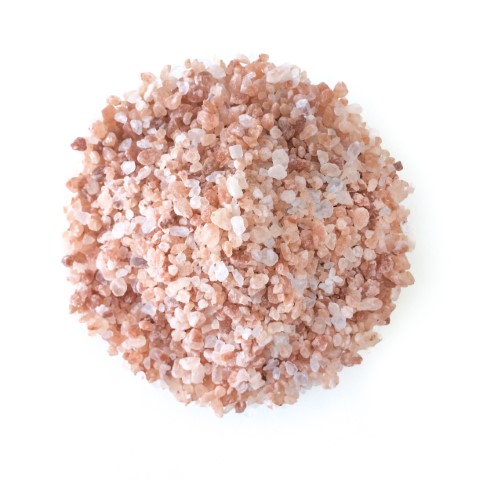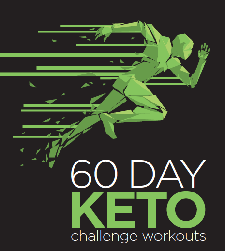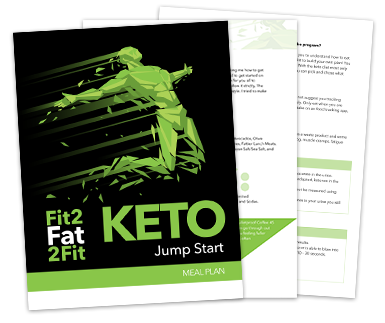While the basic tenets of keto diets are straightforward (high fat, moderate protein, low carbohydrates), you must consider other aspects to take the best care of your body. If you focus only on the broad strokes of ketogenic diets, you can neglect essential minerals and nutrients that will keep your body balanced and healthy.
Making sure you get enough nutrients on a new diet can be tricky. How much is enough, too much, and isn’t sodium bad for you? These questions can be paralyzing, which is why finding a program that can help you do keto in a healthy way that helps you lose weight is so important.
We discuss why sodium is so important on a keto diet, why you need more, and how not getting enough salt can have negative side effects.
Why Add Sodium to Keto?
A quick review of the keto diet reminds us that we’re trying to accomplish a metabolic switch. Before keto, your body burns carbohydrates (like sugar, especially) for fuel. During keto, we want the body to burn fat by switching to a body state called ketosis. When you switch to ketosis, your body loses previously-stored electrolytes, including sodium.
This is compounded by switching from pre-packaged products with a high sodium content to higher fat items that support a ketogenic lifestyle.
How Low Sodium Can Affect You
“Keto Flu”
Keto flu is a bit of a misnomer. It’s not really the flu, but it can feel like it. Symptoms include nausea, dizziness, cramping, irritability, brain fog, trouble sleeping, and muscle soreness.
This usually happens because your body is essentially going into withdrawal from carbs. It used to burn carbs, and now that you’ve switched to a different fuel, it’s confused.
These symptoms usually start the first day or two after removing carbs and usually only last a week (extreme cases can last up to a month). The most significant contributors to keto flu are dehydration and electrolyte imbalance. By being careful to keep your electrolytes up and a bottle of water by your hand all the time, you can minimize the effects of keto flu.
Sodium is an essential electrolyte in our body, helping to give us energy in the right amounts. Keeping your sodium intake high can help keep keto flu from knocking you out.
Oh Cramp
Your muscles depend on hydration and electrolytes. Without those two things, they get fatigued much faster and can cramp. Muscle cramps frequently happen at night and are a very unpleasant way to wake up. They are also prevalent at the beginning of ketosis as your electrolyte levels struggle to keep up with the biochemistry changes.
Get your hands on some bone broth or salted almonds high in sodium to combat this. Also, throwing some extra potassium in with some leafy greens will help balance your electrolytes further.
Tummy Troubles
Muscle cramps can extend to your internal muscles as well. Your digestive tract relies heavily on these muscles, and if they aren’t operating at full capacity because they’re missing sodium, you might suffer from constipation or diarrhea.
We’ll always recommend drinking more water because it can never hurt. Other things you can do to combat this are taking magnesium supplements and having an Epsom Salt bath.

The Best Salts For Keto Diets
Himalayan Pink Salt
Himalayan pink salt has high potassium, magnesium, and calcium concentrations on top of the sodium that’s naturally present in salt. Because of this, this salt is packed with a lot of the minerals we need more of.
Rawer in shape and less refined, it’s a favorite for those wanting to put less-processed materials into their body. With no chemicals added, this Himalayan Salt has 84 mineral nutrients, making it an easy way to supplement minerals you might lose during ketosis.

Sea Salt
Ground salt comes from water evaporated by the sun and is much saltier than your run-of-the-mill table salt. This is because the bigger crystals usually contain higher levels of minerals. Also, because it’s the simplest form of obtaining salt, it has lower processing, making it a great choice.
How Much Salt Should I have on Keto?
The recommended maximum daily sodium concentration for a regular diet is 2300 mg. That’s just slightly less than a single teaspoon of salt, which is not much when considering how many pre-processed or packaged foods have sodium.
Keto diets need a much higher sodium intake. The range for keto diet sodium intake is 2000-5000 mg. While that might seem high, remember that you’re going to lose a lot of that while in ketosis, and we’re just trying to make sure we pack enough in there to fuel your body correctly.
Would You Like Salt With That?
Flu-like symptoms, diarrhea, and muscle cramps are symptoms that can be avoided by ensuring you’re getting the proper nutrients into your body. Because keto is switching your body to a different way of operating, it’s essential to supplement the right minerals into your diet to ensure you have optimal levels.
My Back2Fit keto weight loss program can help you do keto the right way. Throughout this program, I teach you how you can lose weight on keto without having the nasty side effects of unbalanced electrolytes.



